GREGGII Hemsley, 1878
Synonyms :
Sedum heterophyllum Rose in sched. (s.a.)
Sedum diversifolium Rose (1903)
Sedum greggii ssp. angustifolium R.T.Clausen (1978)
Distribution : Mexico (Central Mexican Plateau, Trans-Mexican Volcanic Belt : Guanajuato, Hidalgo, Jalisco, mexico, Michoacán, Querétaro, San Luis Potosí, Zacatecas), 1300 - 2745 m.
Description (by 't Hart & Bleij in IHSP, 2003) :
Perennial herbs with cone-shaped rosettes at the base of the flowering branches.
Leaves alternate (rarely decussate), obovate, oblanceolate or elliptic, rounded to obtuse, sessile, papillose, 3 - 12 x 1,2 - 5 mm, divergent or reflexed.
Inflorescences : Flowering branches erect, decumbent or pendulous, 2,7 - 15 cm, inflorescences branched cymes with 1 to many flowers, pedicels 0,5 - 6 mm.
FIowers (4- to) 5-merous, sepals basally free, mostly broadly spurred, elliptic-ovate, obtuse, papillose marginally, green, 1,7 – 7,7 x 0,8 - 3 mm, erect, petals basally free (rarely connate), elliptic or ovate, acute, mucronate, carinate, sulphur-yellow, sometimes with red-speckled keel, ± 6 mm, spreading, anthers yellow.
Cytology : 2n = 36, 52, 53, 60, 66, 72, 68, ± 148.
The ssp. angustifolium differs cytologically and in having linear leaves in the inflorescence.
Ray Stephenson (Sedum, Cultivated Stonecrops, 1994, p 251) :
After yellow flowers are spent in midsummer, tightly packed, imbricate leaves of Sedum greggii form conelike rosettes at bases of stems. These buds elongate the following winter. By spring, stems are seen for the first time as simple, terminal inflorescences of several flowers rise above still relatively tightly packed, elongated tufts. This delightful species is quite common in collections as it propagates easily and is not very demanding.
Habitat : Found in the western section of the Trans-Mexican Volcanic Belt from Puebla to southern Jalisco and northern San Luis Potosí, this stonecrop prefers shady cliffs.
Main points of dinstinction : Evans describes leaves as light green, but in my experience they are a very intense, bright color, especially in the bud stage. This species is similar in habit to Sedum grandipetalum, and although quite variable, the two could hardly be con-fused. Sedum greggii is a much smaller plant with floriferous branches only about 6 cm (2 in) long, while branches of S. grandipetalum are often four times this length. Leaves of buds and inflorescences are papillose. Pedicellate flowers, carried on small cymes, have sepals which may or may not be spurred. Sepals, like leaves, are papillose and often are speckled with tiny pin-spots of deep red. Sulphur-yellow petals frequently have red markings, especially on the underside.
Variation : Cytologically, much variation bas been observed by Uhl (1985) : n = 18 + 6B, 24 + 1, 26, 30, 33, 33 + 6, and 34. An oddity with n = 74 ± 4 has been erected as a subspecies by Clausen (i.e., Sedum greggii ssp. angustifolium). The visible distinguishing characteristic of this subspecies is its linear leaves on inflorescences. It grows on Volcán de Tequila in Jalisco. Regional variations show a wide contrast in leaf size, leaf width, and petal color (ranging from light to deep yellow). I have only observed three obviously different clones, one of which was bluer green with lighter colored petals, but many more variations could be in cultivation.
Horticulture : This is a delightful, bright, low-growing species that is easy to propagate. Not only can conelike buds be easily removed from stem bases, but more are formed on inflorescences and these begin to push out roots before inflorescences disintegrate. In addition, plants seem to be spontaneous from inflorescence litter, so one is never short of propagation material. Having said this, Sedum greggii can never become a pest. It is a bright subject for a mixed bowl garden.
Plants in habitat, Mexico :
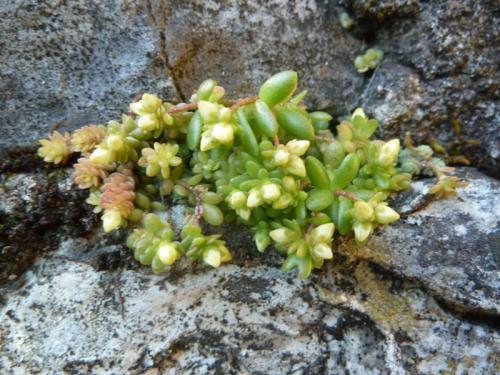
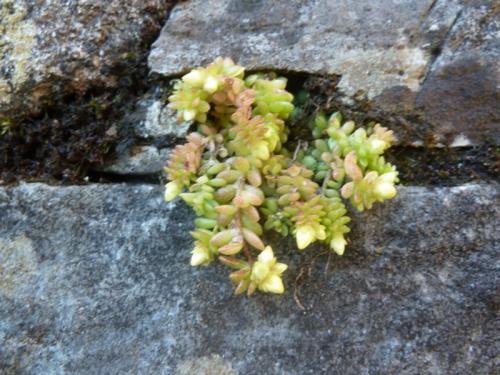
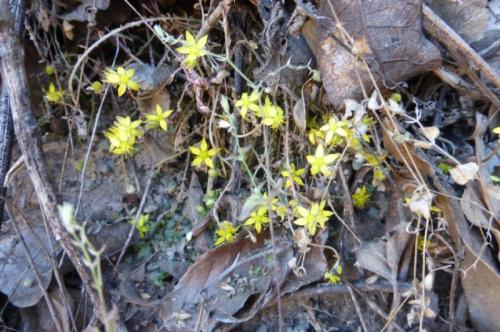
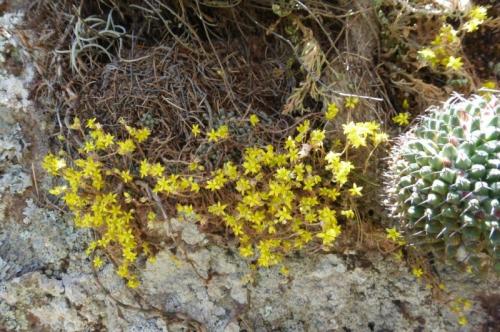
Plants in cultivation :
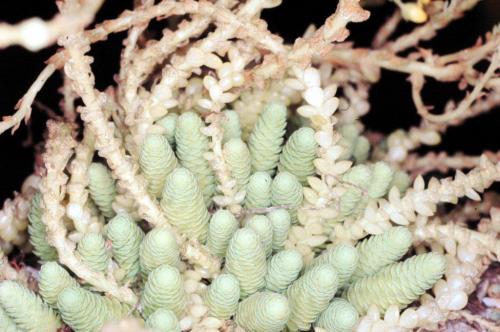
Photo Ray Stephenson
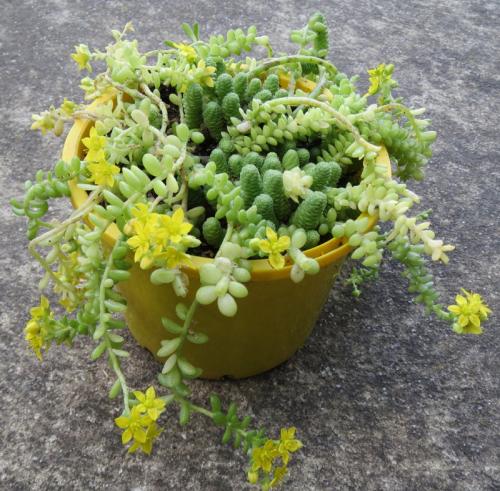
Photo Noelene Tomlinson